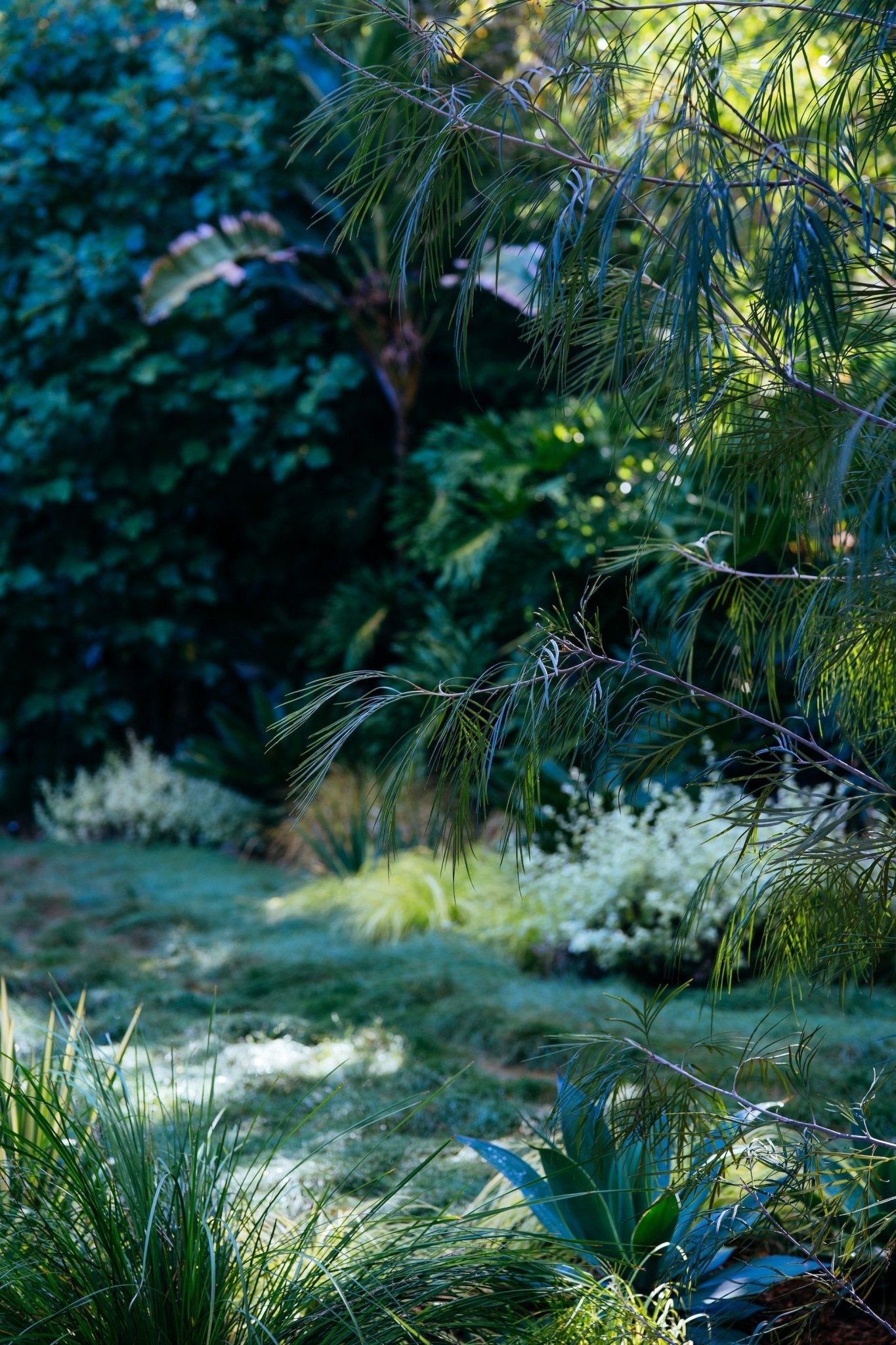It’s time to adjust our gardening habits to adapt to the drought in LA.
Anyone who has spent time with me knows how much I love my garden. There’s nowhere I’d rather spend an afternoon - it’s the perfect place for a quiet moment of solitude.
With the drought conditions in Los Angeles becoming increasingly dire, I wanted to share some tips for holistic, eco-conscious gardening from landscape designer Jessica Viola, founder and owner of Viola Gardens Design. Jessica helped create the iconic garden at the Los Feliz Estate we sold a couple of years ago. We’ve already interviewed her for #AllCoopedUp, but decided to chat with her again for advice on how to adjust our gardening habits to adapt to California’s drought conditions. Read below for all the info on watering restrictions, and for Jessica’s expert advice.
|
Design by Jessica Viola, Marisol Metcalfe + Sammy Gore | Los Feliz Estate |
Design by Scott Schrader + Exquisite Surfaces | June Street Estate |
Tips + Tricks from Jessica Viola
What are your go-to ground coverings?
Go to ground covers for me are baccharis pigeon point, ceanothus anchor bay, eriognium rubescens, manzanita uva-ursi, casuarina cousins it, myoporum parvifolium and Grevelia coastal gem.
What overall advice do you have for people as they transition to this reduced watering schedule?
We need to move our thinking beyond simply ‘drought-tolerant’ plants and into a more regenerative place as it relates to our landscapes. We want to allow ecological functions to occur and find a place for humans in the mix without imposing solutions that have proven to make matters worse.
So to do so we have to think holistically.
1. Create habitat and cultivate curated diversity with native plants to accentuate botanical beauty, increase erosion control, deepen ecological relationships, cultivate habitat and share resources between plants at the root level, from the ground up.
Working with plants that call in pollinators and restore habitat calls in birds, butterflies, hummingbirds, bumblebees builds soil and creates networks of supports between the plant communities underneath the ground which in turn support our great trees, increasing shade, preserve moisture, encourage biodiversity at the soil level, prevent weeds and can surprise us with delight.
Many of the plants endemic to CA have evolved to tolerate drought, heat, increased Santa Ana winds and seasonal rains and have thrived here for thousands of years. If the architecture of a home requires more punctuation, I will turn next to plants from South Africa, the Mediterranean and Australia/New Zealand which have similar climates.
But always I try to use about 70% native plants.
|
Image from Jessica Viola. |
Design by Sirak Studio + Hommes and Gardens | 608 N. Mansfield |
2. If you haven’t yet, convert your irrigation systems to drip.
Drip brings slow, deep water to plants which will thrive with that set up. The goal in our climate and under these conditions especially is to train plants to thrive with deep watering, as little as possible. See our newsletter below for info on the restrictions and note that drip is exempt from the restrictions because it’s an efficient use of managing water and resources in our landscapes.
3. Recycle the flow of energy - explore water catchment systems, rain water harvesting containers, grey water systems and other time tested design solutions for growing plants and food in dry climates. In approaching the landscape, seek to create edge - meaning we want berms (little hills) and swales (little valleys) which create movement of water and resources between plant communities. We call this ‘edge’. Flat, non-porous surfaces that create sheet flow (water which moves over and out without being recycled) is a wasted opportunity. Where surfaces are more irregular, more textured, contoured, there is an opportunity for things to happen. It’s on the edge of all systems, including human, that the greatest innovations occur.
4. Think in diversity. Planting one species with minimal ecological relevance creates conditions for fungus and disease. Curating pallets with a select and still diverse palette balances the ecological relationships, calling in the right insects and pollinators which mitigate infestations, build soil and reduce fungus.
5. Water early in the morning. This allows plants to get a nice drink early in the day and then use the moisture to it’s benefit when the high heat of the day hits. Watering at night can create conditions for fungus.
6. Bird baths, little water features and the like are important for birds, bees and animals which are struggling to survive with little water. Water features can create beauty through sound and ease stress as well as be beneficial in our dry climate.

Design by Scott Schrader + Exquisite Surfaces | June Street Estate
Los Angeles County Watering Restrictions
- For all LADWP customers with street addresses ending in ODD numbers, watering will be limited to Mondays and Fridays.
- For all customers with addresses ending in EVEN numbers, watering will be limited to Thursdays and Sundays
- Watering between the hours of 9:00 AM and 4:00 PM is prohibited; we recommend deep watering early in the morning at dawn so the water can settle and moisture absorbed by the sunshine during the day . Watering in the evening is helpful during heat waves but discouraged on a regular basis as it can cause fungus. Watering during the high heat of the day can burn plants.
- Sprinkler watering is limited to 8 minutes per use
- Sprinklers using water conserving nozzles are limited to 15 minutes per use











